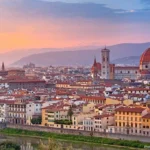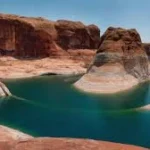
New Delhi is the capital city of India, situated on the banks of the Yamuna River, incorporating 16.5 square miles of land inside the Delhi metropolitan area. Delhi itself fringes Rajasthan, Uttar Pradesh, Punjab, and Haryana. The city’s establishment was laid in 1911 by the Emperor of India, and a brief government building was worked in 1912. Ten years preceding the new capital’s initiation, the vast majority of the administration structures had moved to New Delhi. On February 13, 1931 the new capital was introduced. India picked up its autonomy in 1947 and New Delhi New Delhi’s populace incorporates in excess of 250,000 occupants.
The world’s most populated city is Tokyo. As of 2020, the capital of India is home to an incredible 29.6 million people!
Prior to New Delhi’s founding, Delhi itself was destroyed by many empires and dynasties. Seven times it was destroyed and it was rebuilt every time.
In 2013 alone, New Delhi suffered from 12 earthquakes, with four of magnitudes higher than 2.5 on the richter scale.
The capital of India moved from Calcutta to New Delhi in 2012, after the Emperor chose it as the new site.
New Delhi is officially India’s capital, whereas Delhi is the name for the surrounding region, the NCT (National Capital Territory of Delhi), of which New Delhi forms a small part of.
The architect who planned much of New Delhi was Edwin Lutyens, a British architect that has been referred to as ‘the greatest British architect’. New Delhi is often referred to as Lutyens’ Delhi in honor of his contribution to New Delhi’s beginnings.
Summers in New Delhi are long – beginning in April and lasting through to October.
New Delhi was originally designed with the intention of showcasing British power through architectural choices. Because of influence by historians there were also indigenous features included in the city’s design.
Mughal landmark, which stands at 73 metres tall, is one of the most popular tourist spots in the city.
New Delhi is considered to be one of the world’s greenest cities, with almost 20% green space.
The Delhi Metro System was Voted the 2nd Best in the World.
The public transport system in New Delhi runs on natural gas.
The City was Designed by British Architects Sir Edwin Lutyens and Sir Herbert Baker.
New Delhi is located on more than one fault line and because of this it is prone to frequent earthquakes. Most of the earthquakes are mild but in 2015 a 5.4 magnitude occurred. In 2007 a 4.7 magnitude hit and in 2011 a 4.2 magnitude hit. This is more than usual for New Delhi and surrounding regions.
As of 2019 Delhi has entered the list of the world’s top 10 most popular cities for tourists, due to its rapid development in the tourism sector in recent years.
The temperature in New Delhi is influenced by the humid subtropical climate of the area. Summers can get as hot as 46°C and winters only get as low as 0°C.
The Lotus Temple in Delhi is the World’s Only Structure of the Bahai Faith in Asia.
New Delhi’s air quality is not good due to pollution. The city ranks 154 out of 230 cities surveyed by Mercer’s in 2015. In 2014 the World Health Organization ranked New Delhi as the world’s most polluted city.
Five of the Original 14 Gates of the Walled City of Delhi are Still Standing.
New Delhi’s metro system is part of the Delhi Metro which serves Delhi, New Delhi, Ghaziabad, Noida, Gurgaon, and Faridabad.
The Entire Public Transport System in Delhi runs on Compressed Natural Gas (CNG).
The most commonly spoken languages in New Delhi are Punjabi, Hindi and Urdu while English is used in more formal settings like in the government and business.
Delhi’s Khari Baoli Market is Asia’s Largest Wholesale Spice Market.
The highest rate of literacy in Delhi is in New Delhi, with a higher than 89% literacy rate according to 2011 stats.
Indira Gandhi International Airport was Voted 4th Best in the World.
The most popular religion in New Delhi is Hinduism, which accounts for almost 80% of the population’s religious choice.
New Delhi has an International Museum of Toilets.
There are also Muslims, Sikhs, Jains, Christians, Parsis, Buddhists, and Jews.
After Nairobi in Kenya, Delhi is the second most bird-rich capital in the world.
New Delhi is home to one of India’s largest museums – the National Museum.
20% of Delhi’s Landmass is Covered by Forests.
Tourist spots in New Delhi include Jama Mosque, Humayun’s Tomb, Lodi Tomb, India Gate, Connaught Place, and Red Fort.
New Delhi FAQs: Unveiling the Capital of India
New Delhi, a vibrant tapestry of history, culture, and modernity, serves as the capital of India. To quench your curiosity about this remarkable city, here are some frequently asked questions, answered in detail:
1. What is the difference between New Delhi and Old Delhi?
New Delhi, established in 1911, is a planned city built by the British Raj. It boasts wide avenues, government buildings, and leafy parks. Old Delhi, founded in the 16th century, is a bustling metropolis known for its narrow lanes, ancient forts, and vibrant bazaars. Though distinct in their origins and layouts, they are now seamlessly connected, forming the National Capital Territory of Delhi.
2. What are some must-see historical sites in New Delhi?
-
Red Fort: A UNESCO World Heritage Site, this majestic 17th-century fort was the seat of Mughal power. Explore its grand halls, marbled courtyards, and imposing ramparts.
-
Qutub Minar: The tallest brick minaret in the world, Qutub Minar is an architectural marvel. Ascend the stairs for breathtaking views of the city.
-
Humayun’s Tomb: Predating the Taj Mahal, this exquisite tomb is a UNESCO site and architectural inspiration for the Taj. Its gardens and red sandstone facade are a sight to behold.
-
India Gate: A war memorial inspired by the Arc de Triomphe, India Gate commemorates Indian soldiers who died during World War I.
3. What cultural experiences await in New Delhi?
-
Temples and Spiritual Sites: From the iconic Akshardham Temple to the serene Lotus Temple, Delhi offers a glimpse into India’s rich spiritual tapestry.
-
Chandni Chowk: Immerse yourself in the bustling heart of Old Delhi. This historic market overflows with spices, jewelry, textiles, and local delicacies.
-
Museums: Explore India’s history and heritage at the National Museum, or delve into the world of crafts at the Crafts Museum.
-
Performances: Catch a traditional dance performance or a contemporary play at one of Delhi’s many cultural centers.
4. Is Delhi a good place for foodies?
Absolutely! Delhi is a paradise for food lovers. Savor street food like kebabs, chaat, and samosas, or indulge in rich curries at renowned restaurants. Don’t miss the Mughlai cuisine, a legacy of the Mughal Empire.
5. How to get around New Delhi?
The Delhi Metro is a fast, convenient, and affordable way to navigate the city. Rickshaws and taxis are also readily available. For a local experience, hop on a cycle rickshaw.
6. What is the best time to visit New Delhi?
The pleasant weather between October and March makes it an ideal time to visit. However, if you enjoy festivals and cultural events, consider visiting during Dussehra or Diwali. Be prepared for warmer temperatures during the summer months (April-June).
7. Are there any safety concerns for travelers in New Delhi?
As with any major city, exercise caution in crowded areas and be wary of petty theft. Dress modestly when visiting religious sites. Always research best practices for staying safe while traveling in India.
This is just a glimpse into the captivating world of New Delhi. With its historical treasures, cultural experiences, and delectable cuisine, this vibrant city promises an unforgettable experience.








